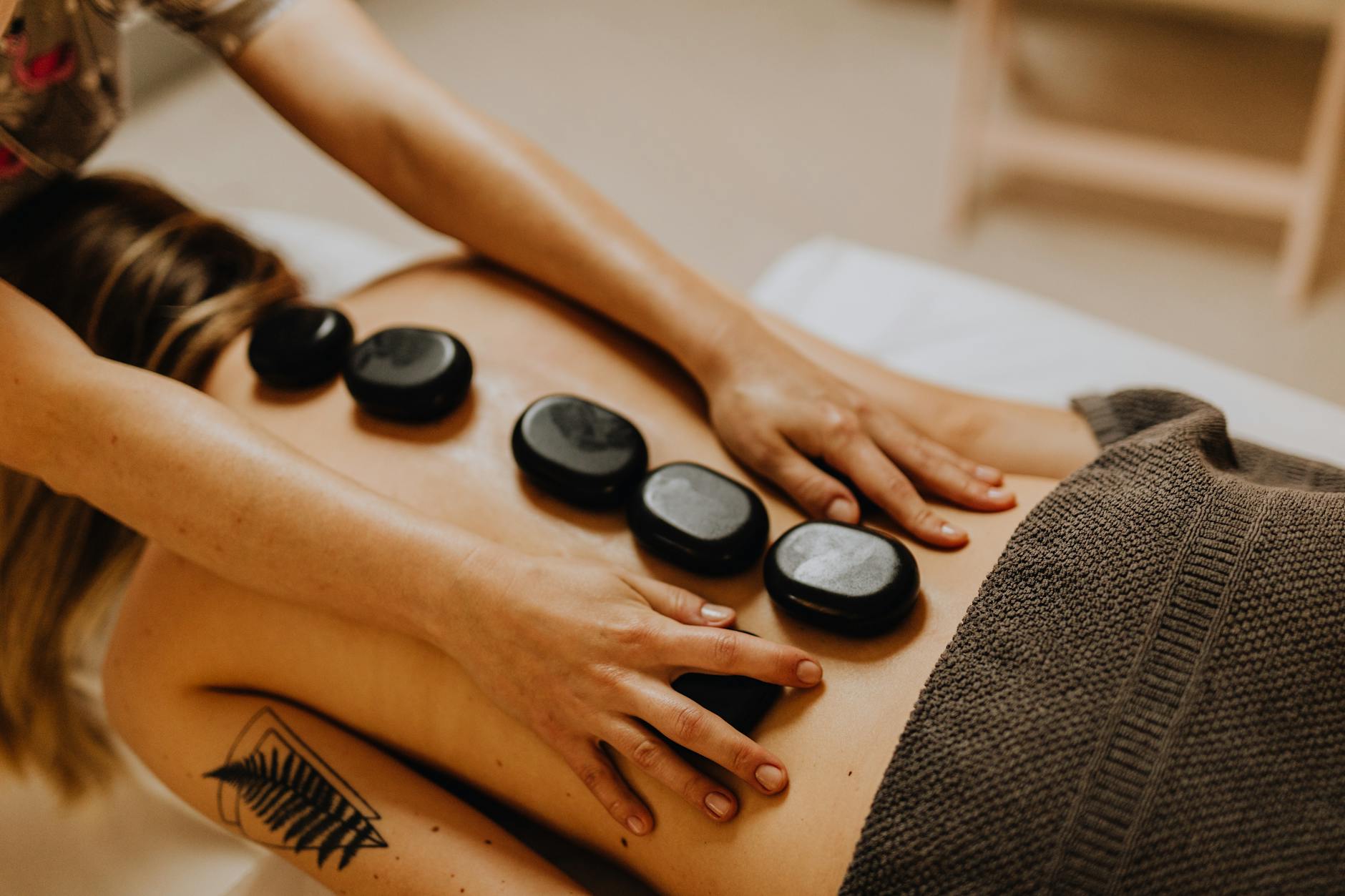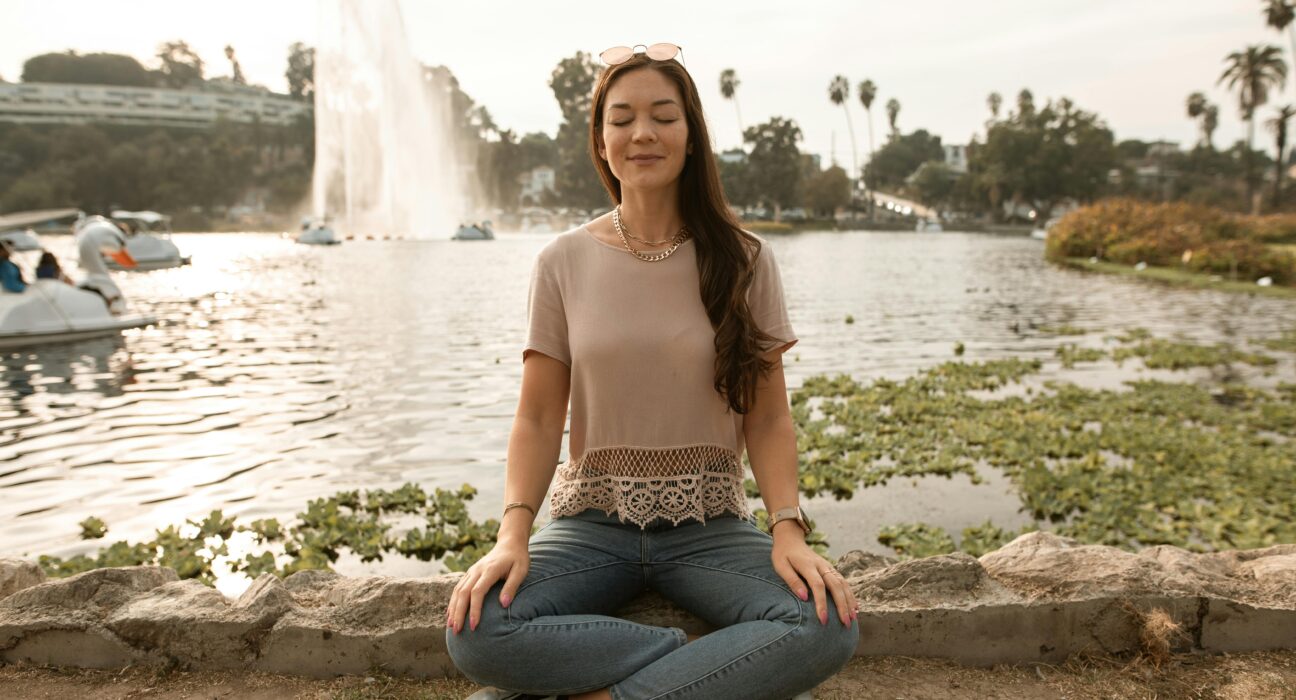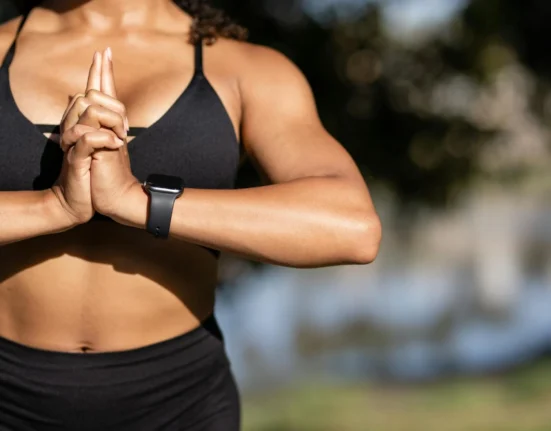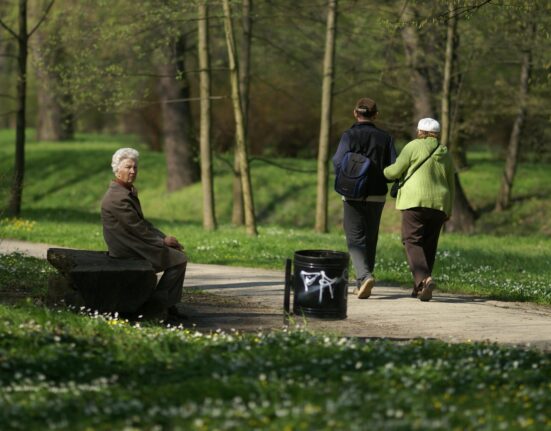Meditation and relaxation can help you feel better. They’re not just for reducing stress – they can also improve your overall health. What happens in your body when you meditate? It’s actually pretty cool. When you relax, your heart rate slows down, and your blood pressure goes down too. This can help lower your risk of heart disease and other health problems. You’ll learn how meditation and relaxation work, and how they can help you feel better.
What is Meditation?
Meditation is a practice that has been around for thousands of years, with its roots in ancient India. The concept of meditation is simple: it’s a way to train your mind to focus, relax, and become more aware of your thoughts and feelings. But what exactly happens when you meditate?
 Photo by Kevin Malik
When you meditate, you’re not just sitting quietly – you’re actually changing the way your brain works. You can learn more about the history of meditation on websites like Meditation History or The History of Meditation.
Photo by Kevin Malik
When you meditate, you’re not just sitting quietly – you’re actually changing the way your brain works. You can learn more about the history of meditation on websites like Meditation History or The History of Meditation.
Types of Meditation
There are many different types of meditation, each with its own unique focus and technique. Some common types of meditation include mindfulness meditation, transcendental meditation, and guided meditation. Mindfulness meditation involves paying attention to the present moment, without judgment or distraction. Transcendental meditation involves the use of a mantra to help quiet the mind. Guided meditation involves following the guidance of a teacher or recording to lead you through a meditation practice. You can find more information about meditation techniques on Meditation.
Benefits of Meditation for Health and Fitness
So why meditate? The benefits of meditation are numerous, and can have a big impact on both physical and mental health. Regular meditation practice has been shown to reduce stress and anxiety, improve sleep, and even lower blood pressure. Meditation can also boost mood, improve focus and concentration, and increase self-awareness. If you’re interested in learning more about the benefits of meditation for health and fitness, you can visit A Brief History of Meditation or Meditation or is it Mindfulness.
The Science Behind Relaxation
When we think of relaxation, we often imagine a state of calm and serenity. But what exactly happens in our bodies when we relax? Relaxation has a profound impact on our physical and mental well-being, and understanding the science behind it can help us appreciate its importance.
 Photo by Kaboompics.com
Our bodies have a natural response to stress, often referred to as the “fight or flight” response. When we perceive a threat, our heart rate increases, our blood pressure rises, and our muscles tense up. This response is meant to be temporary, but in today’s fast-paced world, we often find ourselves in a state of constant stress. Relaxation techniques can help counteract this response, promoting a state of calm and reducing the risk of chronic diseases like heart disease and diabetes. You can find more information on relaxation techniques on websites like Six relaxation techniques to reduce stress and Relaxation Techniques for Mental Wellness.
Photo by Kaboompics.com
Our bodies have a natural response to stress, often referred to as the “fight or flight” response. When we perceive a threat, our heart rate increases, our blood pressure rises, and our muscles tense up. This response is meant to be temporary, but in today’s fast-paced world, we often find ourselves in a state of constant stress. Relaxation techniques can help counteract this response, promoting a state of calm and reducing the risk of chronic diseases like heart disease and diabetes. You can find more information on relaxation techniques on websites like Six relaxation techniques to reduce stress and Relaxation Techniques for Mental Wellness.
How Relaxation Affects the Nervous System
Relaxation has a profound impact on our nervous system. When we relax, our parasympathetic nervous system (PNS) takes over, promoting a state of calm and reducing stress. The PNS is responsible for slowing down our heart rate, lowering our blood pressure, and promoting digestion. This is in contrast to the sympathetic nervous system (SNS), which is responsible for the “fight or flight” response. By activating the PNS, relaxation techniques can help reduce stress and anxiety, promoting a sense of calm and well-being. For more information on the effects of relaxation on the nervous system, you can visit Relaxation Techniques: What You Need To Know | NCCIH or Relaxation techniques for stress.
The Role of Breathing in Relaxation
Breathing plays a critical role in relaxation. When we’re stressed, our breathing tends to be shallow and rapid. This can exacerbate the “fight or flight” response, making it harder to relax. By focusing on slow, deep breathing, we can help calm our nervous system and promote relaxation. This is why many relaxation techniques, such as meditation and yoga, emphasize the importance of breathing. By slowing down our breathing, we can slow down our heart rate, lower our blood pressure, and promote a sense of calm. You can learn more about breathing techniques on websites like Relaxation Techniques for Stress Relief.
Meditation Techniques for Relaxation
Meditation is a powerful tool for relaxation, and there are many techniques to choose from. Whether you’re looking to reduce stress, improve your mood, or simply feel more calm and centered, meditation can help. So, what are some of the most effective meditation techniques for relaxation?
 Photo by Polina Tankilevitch
Let’s explore a few examples. You can learn more about relaxation techniques on websites like Relaxation Techniques for Stress Relief.
Photo by Polina Tankilevitch
Let’s explore a few examples. You can learn more about relaxation techniques on websites like Relaxation Techniques for Stress Relief.
Guided Meditation for Stress Relief
Guided meditation is a great way to get started with meditation, especially if you’re new to the practice. With guided meditation, you’ll listen to a gentle, soothing voice that will walk you through the meditation process. This can be especially helpful for stress relief, as it allows you to focus on the present moment and let go of worries about the past or future. You can find guided meditation recordings online, or through mobile apps like Headspace or Calm. For instance, Headspace offers a variety of guided meditations specifically designed for relaxation and stress relief.
Mindfulness Meditation for Anxiety
Mindfulness meditation is another powerful technique for relaxation. This type of meditation involves paying attention to the present moment, without judgment or distraction. You might focus on your breath, a mantra, or a physical sensation in your body. The goal is to cultivate a sense of awareness and acceptance, allowing you to let go of anxiety and stress. Mindfulness meditation can be practiced anywhere, at any time, and can be especially helpful for managing anxiety. You can learn more about mindfulness meditation on websites like Mindfulness Meditation or Verywell Mind.
Incorporating Meditation into Your Daily Routine
Incorporating meditation into your daily routine can have a significant impact on both your physical and mental well-being. With regular practice, you can reduce stress and anxiety, improve your mood, and even lower your blood pressure. So, how can you make meditation a regular part of your daily routine?
 Photo by Michael Burrows
To start, it’s essential to find a quiet and comfortable spot where you can meditate without distractions. This could be a corner in your bedroom, a spot in your backyard, or even a local park. You can find more information on how to create a meditation space on websites like Creating a Meditation Space.
Photo by Michael Burrows
To start, it’s essential to find a quiet and comfortable spot where you can meditate without distractions. This could be a corner in your bedroom, a spot in your backyard, or even a local park. You can find more information on how to create a meditation space on websites like Creating a Meditation Space.
Starting Small with Meditation
When it comes to incorporating meditation into your daily routine, it’s essential to start small. Begin with short meditation sessions, such as 5-10 minutes, and gradually increase the duration as you become more comfortable with the practice. You can use guided meditation apps like Headspace or Calm to help you get started. These apps offer a variety of meditation techniques and sessions specifically designed for beginners. For example, you can try a body scan meditation to help you relax and focus on the present moment.
Making Meditation a Habit
To make meditation a habit, it’s crucial to incorporate it into your daily routine. Try to meditate at the same time every day, such as first thing in the morning or before bed. You can also try to meditate during your lunch break or immediately after a workout. The key is to find a time that works for you and stick to it. Consistency is vital when it comes to developing a meditation habit. You can find more tips on how to make meditation a habit on websites like Meditation Habit. Additionally, you can explore different types of meditation, such as loving-kindness meditation or transcendental meditation, to find what works best for you.
Overcoming Common Obstacles to Meditation
When it comes to meditation, many people face common obstacles that can make it difficult to establish a regular practice. These obstacles can range from a busy mind to finding a quiet space to meditate. So, how can you overcome these challenges and make meditation a part of your daily routine?
Dealing with a Busy Mind
One of the most common obstacles to meditation is a busy mind. It’s easy to get caught up in thoughts and worries, making it difficult to focus on the present moment. So, what can you do to calm your mind and stay focused?
 Photo by Nataliya Vaitkevich
One strategy is to start small, beginning with short meditation sessions and gradually increasing the duration as you become more comfortable with the practice. You can also try using a guided meditation app, such as Headspace or Calm, which can help you stay focused and calm. Additionally, you can learn more about overcoming common obstacles to meditation on websites like Overcome These Five Common Obstacles to Meditation or Common Issues and Difficulties with Meditation.
Photo by Nataliya Vaitkevich
One strategy is to start small, beginning with short meditation sessions and gradually increasing the duration as you become more comfortable with the practice. You can also try using a guided meditation app, such as Headspace or Calm, which can help you stay focused and calm. Additionally, you can learn more about overcoming common obstacles to meditation on websites like Overcome These Five Common Obstacles to Meditation or Common Issues and Difficulties with Meditation.
Finding a Quiet Space to Meditate
Another common obstacle to meditation is finding a quiet space to practice. With busy schedules and noisy environments, it can be challenging to find a peaceful spot to meditate. So, what can you do to create a quiet and comfortable space for meditation? You can start by identifying a quiet corner in your home or office where you can meditate without distractions. You can also try using a meditation room or a local park, depending on your preferences. Additionally, you can use noise-cancelling headphones or calming music to create a peaceful atmosphere. For more information on creating a meditation space, you can visit Mastering Meditation: Overcoming Mindfulness Barriers or 7 Frustrating Meditation Obstacles (And How to Overcome Them). You can also find helpful tips on Trouble Meditating? Here’s Advice For 17 Common Issues.
Conclusion
Meditation and relaxation have numerous benefits for health and fitness. They can help reduce stress and anxiety, improve sleep, and even lower blood pressure.
Regular practice can also boost mood, improve focus, and increase self-awareness. By incorporating meditation into your daily routine, you can experience these benefits firsthand.
Consider starting small, with short sessions, and gradually increase the duration as you become more comfortable with the practice. What changes will you notice in your body and mind when you make meditation a habit?








